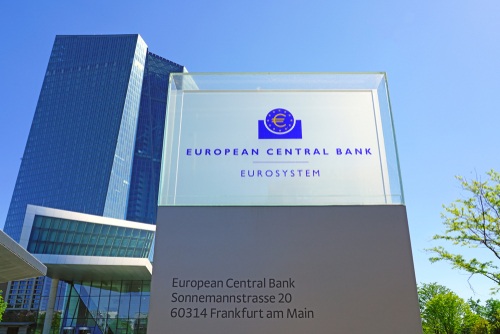
Europe | Monetary Policy & Inflation | US

Europe | Monetary Policy & Inflation | US
This article is only available to Macro Hive subscribers. Sign-up to receive world-class macro analysis with a daily curated newsletter, podcast, original content from award-winning researchers, cross market strategy, equity insights, trade ideas, crypto flow frameworks, academic paper summaries, explanation and analysis of market-moving events, community investor chat room, and more.
Hawkish rhetoric from the ECB, especially Board Member Schnabel, has markets in turmoil. With inflation at 9.1% and the EU on the brink of recession, debate around a potential 75bp interest rate hike at Thursday’s ECB meeting has only added fuel to the fire. So, too, is talk of taking their main policy rate to above neutral levels (Chart 1).
There are several clear reasons why we expected this hawkishness:

For the meeting ahead, the compounding factors above lead us to lean marginally in favour of a 75bp hike.In the simplest sense,the updated outlook for inflation will be worse and so more decisive action needs to be taken.
The increased focus on near-term inflation is visible across the spectrum of ECB policy makers. Talk of recession is no longer taboo. Instead, it is seen as a necessary evil. Meanwhile, talk of inflation being unanchored is becoming increasingly common. Board Member Isabel Schnabel summed it up best when she noted that long-standing economic realities are changing and that there would be more frequent, more persistent shocks. Among the most important ECB voices, it already has strong backing (Chart 3).

At the previous meeting Lagarde remarked that despite the 50bp hike, the anticipated peak in the rate (the terminal rate) was unchanged. Her previous record of guidance has been very poor, however, and we expect that this remark will turn out to be untrue. However, the market has been surprisingly reluctant (even with talk of 75bp) to price much beyond the 2% upper bound of the neutral zone (the theoretical range at which interest rates neither stimulates nor constrains activity).
We believe this will eventually change, as the worse medium-term inflation outlook becomes clearer. However, for now Lagarde will likely seek to reduce the risk of panic selling of lower-credit assets (such as Italian government bonds). Consequently, we would not be surprised if she sought, again, to push back on higher terminal pricing.
The worsening medium-term inflation situation comes from various factors, including the retrenchment of globalization and the knock-on effect of expensive fertilisers. Likely most important, though, will be the divestment from Russian energy and the shift to greener alternatives.
The assumption that, in the long term, energy inflation will return to the historic average may no longer be valid. Schnabel said as much back in January. Since then, the situation has deteriorated dramatically (Chart 4). Greater uncertainty in base-case inflation forecasts allows for a shift in Lagarde’s (a non-economist) bias away from the more dovish Chief Economist Philip Lane, and towards the more hawkish Schnabel.

The current Gazprom restriction on Nord Stream flows shows that regardless of gas storage, Russia will do its best to squeeze Germany and the rest of Europe. The path to energy self-sufficiency likely lies with nuclear and renewables, which require significant upfront costs (the EU estimates €360bn extra pa to reach current goals). Meanwhile the replacement of pipeline gas with LNG is a long-standing solution (into at least 2024) and will still mean paying a premium in a tight supply market (Charts 5 and 6).

Reports suggest quantitative tightening (QT) will be discussed, but we see very little chance of action yet. QT is the opposite to quantitative easing (QE – when central banks bought government and corporate bonds to lower the cost of borrowing). It is a contractionary monetary policy (designed to lower economic activity and hence inflation) and in the UK and US has come hand-in-hand with the raising of rates.
However, European governments face a difficult situation. Due to the energy crisis they are set to issue increasingly more bonds, this has helped push European bond yields higher, exacerbated by the end of ECB bond buying (QE). German 10Y yields are already above 1.5% and 10Y Italian yields are approaching 4% (a level not sustainably topped since 2013). If the ECB was to start outright selling its bond holdings, these rates would rise even further, and Italian debt sustainability would come into question.
Recently announced ECB intervention mechanisms (such as TPI) are designed to prevent ‘fragmentation’ (that is, the spread of Italian yields widening too far over German). But they will not prevent generic bond yield rises across the market. If the ECB accelerates its hiking (by moving at 75bp) they will need to counter such forces hard. Ultimately, a return to net-asset purchases (QE) cannot be completely ruled out.
All equal, an accelerated path of hiking should help to support the euro as a currency, but will likely mean more pain in the bond market. Alongside Italian politics (election on 25 September), it could be enough to send Italian yields to new local highs, and with it renew worries around debt sustainability. This could see localised weakness in Italian assets extending, at least until more political clarity is established, or ECB support provided.
Elsewhere, we have previously discussed the benefits to the European banking of the ECB’s hiking cycle. While risks of recession could provide an offset, it will help support lending margins.
Spring sale - Prime Membership only £3 for 3 months! Get trade ideas and macro insights now
Your subscription has been successfully canceled.
Discount Applied - Your subscription has now updated with Coupon and from next payment Discount will be applied.